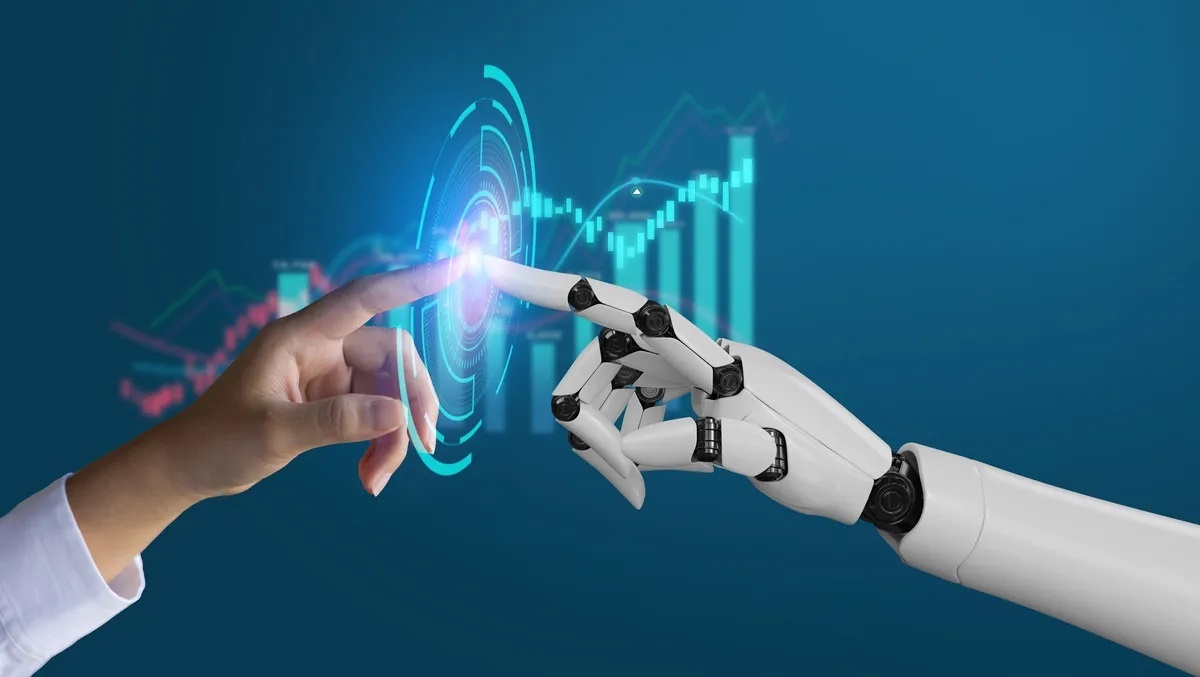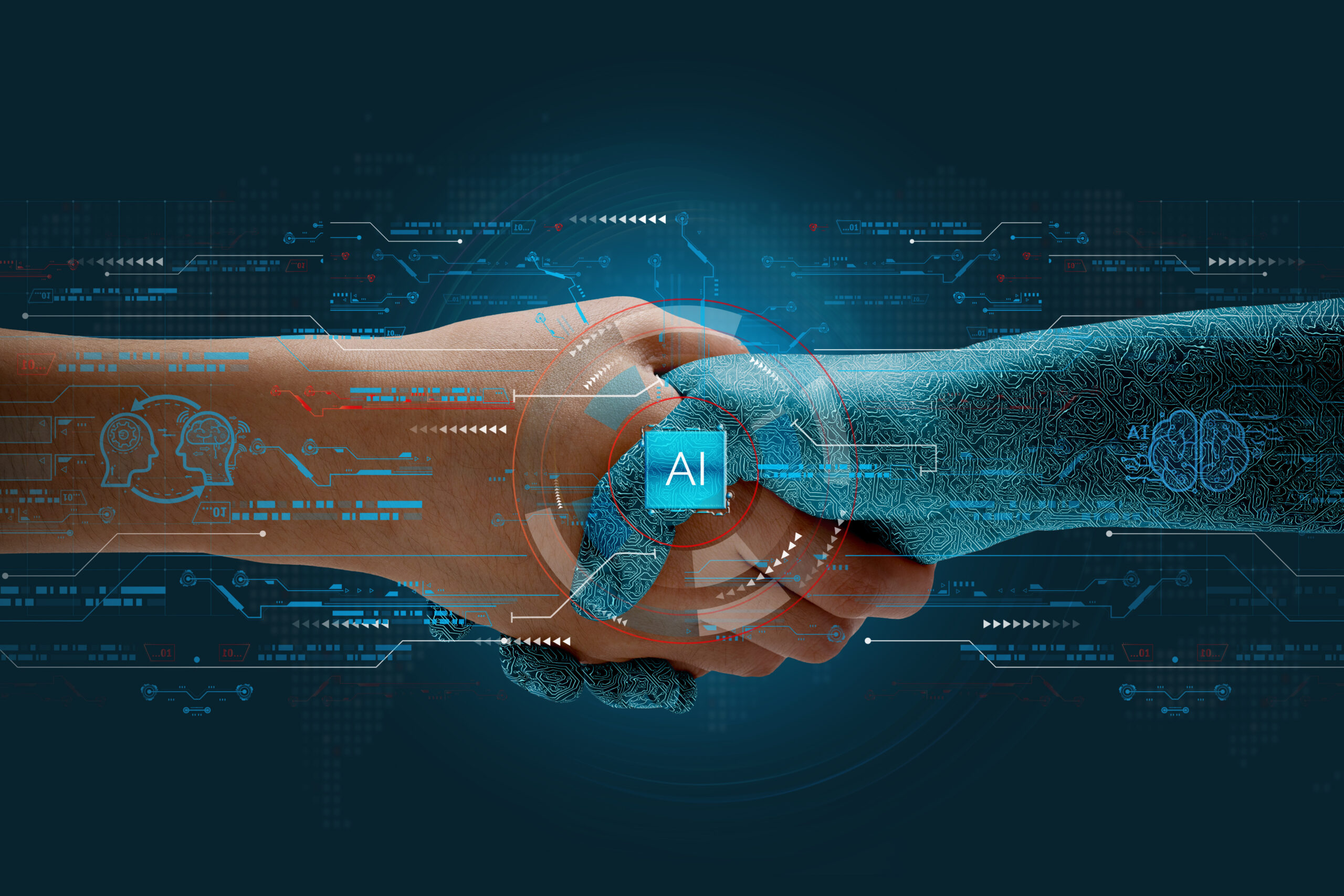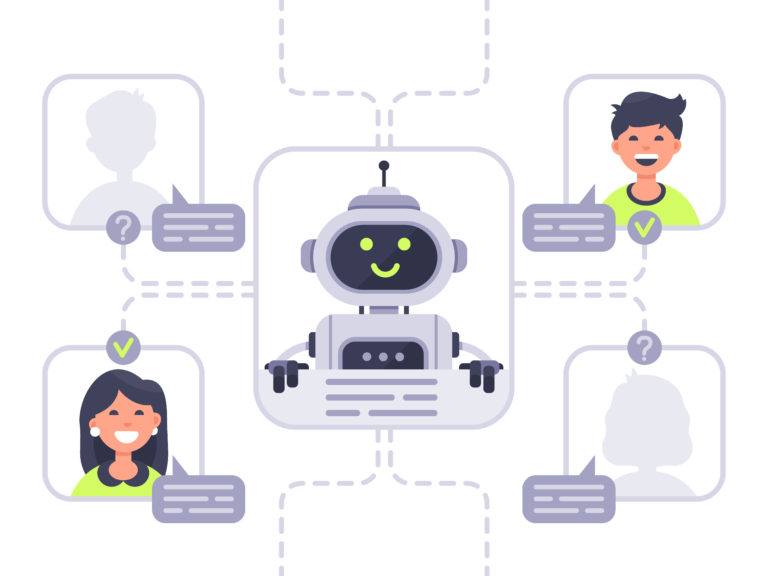Exploring the Role of Human-AI Collaboration in Customer Service
Picture a customer service experience where artificial intelligence handles routine inquiries instantly while human agents focus on complex emotional situations requiring a personal touch. This isn’t science fiction – it’s the reality of modern customer service transformation through human-AI collaboration.
The statistics paint a compelling picture: According to a recent Forbes report, 59% of consumers believe AI will improve future customer service experiences. Yet remarkably, 79% also maintain that humans will always play an essential role in customer support – highlighting the critical importance of getting this partnership right.
What makes this collaboration so powerful? AI excels at rapidly processing vast amounts of data and providing instant responses to common queries, while human agents bring irreplaceable emotional intelligence and complex problem-solving abilities to the table. When these strengths are combined thoughtfully, the result is customer service that’s both highly efficient and deeply empathetic.
This article explores how leading businesses are navigating this new frontier, examining the tremendous benefits of human-AI collaboration along with its challenges. You’ll discover practical insights about implementing these hybrid systems effectively while maintaining the delicate balance between technological efficiency and the human touch that customers still crave.
From automated chatbots that seamlessly escalate complex issues to human agents, to AI systems that empower service representatives with real-time insights, the future of customer service lies not in choosing between human or artificial intelligence, but in harnessing the unique strengths of both. This powerful partnership is reshaping customer experiences for the better.
The Role of AI in Routine Customer Inquiries
Modern customer service has evolved into a sophisticated partnership between artificial intelligence and human agents. AI systems excel at handling routine inquiries with remarkable speed and consistency, processing hundreds of common questions simultaneously through advanced natural language processing.
Consider a typical online shopping experience: When customers need to check order status, track shipments, or get basic product information, AI chatbots provide instant responses. These systems can efficiently process data entry tasks and update customer records without delays. A recent Salesforce study shows that AI can handle up to 80% of routine customer inquiries, dramatically reducing wait times and improving overall satisfaction.
This intelligent division of labor creates a win-win situation. While AI manages high-volume, repetitive tasks, human agents can focus their expertise on complex customer issues that require emotional intelligence and creative problem-solving. For instance, when a customer faces a unique product configuration challenge or needs empathetic support for a sensitive billing dispute, human agents step in with their irreplaceable ability to understand context and provide nuanced solutions.
The collaboration between AI and human agents has transformed customer service efficiency. AI’s ability to instantly categorize and route inquiries ensures that customers are connected with the right resource—whether that’s an automated solution for password resets or a skilled human agent for complex technical troubleshooting. This streamlined approach means customers spend less time waiting and more time getting the help they need.
What makes this partnership particularly powerful is how it enhances both customer and agent satisfaction. Customers enjoy quick responses to simple questions, while agents report higher job satisfaction when freed from repetitive tasks to focus on meaningful interactions where their human skills make a real difference. This synergy creates a more efficient and emotionally intelligent customer service experience that neither AI nor humans could achieve alone.
Leveraging Human Expertise for Complex Issues


Human agents shine brightest in AI-driven customer service when handling complex, emotionally-charged situations. According to Forbes, more than half of consumers prefer speaking with human agents for complex service situations, highlighting the crucial role of human expertise.
Human agents excel at nuanced judgment calls and emotional intelligence that AI simply cannot replicate. When customers face intricate problems requiring creative solutions or empathetic understanding, human service representatives can read between the lines, picking up on subtle emotional cues and adapting their approach accordingly.
The critical thinking capabilities of human agents allow them to navigate complicated scenarios that fall outside standard operating procedures. While AI excels at processing data and handling routine tasks, human experts can connect seemingly unrelated pieces of information to devise innovative solutions tailored to each unique situation.
What truly sets human agents apart is their innate ability to build authentic connections through empathy and intuition. Unlike AI chatbots, human representatives can genuinely understand and validate customer frustrations, creating moments of trust that transform potentially negative experiences into positive ones.
In real-world applications, this human touch proves invaluable. For instance, when a customer faces a complex billing dispute involving multiple departments, human agents can exercise judgment, advocate for the customer, and navigate internal processes while maintaining a compassionate approach – something AI cannot fully replicate.
This isn’t to diminish the role of artificial intelligence in customer service. Rather, human expertise works in harmony with AI’s capabilities. While AI handles data processing and routine inquiries, human agents can focus their emotional intelligence and problem-solving skills on the complex issues where they make the biggest impact.
While AI has transformed customer experience in profound ways, it’s crucial to strike a balance between automation and the human touch. Automation excels at handling routine, data-driven tasks, but there are instances where human empathy and emotional intelligence are irreplaceable.
CustomerThink
The future of customer service lies not in choosing between human agents or AI, but in leveraging the strengths of both. Organizations that recognize and nurture human expertise while embracing technological advancement position themselves to deliver superior customer experiences across all levels of complexity.
Integration Challenges and Solutions
Incorporating artificial intelligence into customer service operations presents several critical challenges that organizations must address. System compatibility is a pressing concern, as legacy systems often struggle to interface effectively with modern AI technologies. According to research from Simply Contact, this hurdle can lead to delays, increased costs, and suboptimal performance if not properly addressed.
Data security is another paramount concern when integrating AI into existing workflows. Customer service operations handle sensitive information, making it essential to implement robust security measures that protect data both in transit and at rest. Organizations must ensure their AI systems comply with data protection regulations while maintaining the efficiency gains that automation promises.
Technical infrastructure compatibility poses a significant hurdle. Legacy systems may require substantial modifications or complete overhauls. This challenge often necessitates careful evaluation of existing architecture and strategic planning to ensure smooth integration without disrupting ongoing operations.
The human element presents its own set of challenges. Customer service representatives may experience anxiety about their changing roles or resist new technologies. This resistance can significantly impact the success of AI implementation efforts. Organizations must invest in comprehensive training programs and clear communication strategies to help their teams understand and embrace AI as a collaborative tool rather than a replacement.
According to industry research, 35% of companies are currently leveraging artificial intelligence, while another 42% are considering its implementation in the future.
Successful AI integration requires a strategic approach focused on continuous monitoring and optimization. Organizations should establish clear metrics for measuring AI performance, regularly assess system effectiveness, and make necessary adjustments to ensure optimal human-AI collaboration. This ongoing evaluation helps identify potential issues before they impact customer service quality and allows for timely improvements to the integrated system.
| Challenge | Description | Solution |
|---|---|---|
| Building AI Expertise | Businesses often lack understanding of AI capabilities and struggle to keep pace with rapid advancements. | Invest in training programs, hire AI specialists, and collaborate with AI solution providers. |
| Ensuring Data Quality and Quantity | Poor data quality can lead to inaccurate predictions and subpar performance. | Implement data cleaning processes and use high-quality third-party data services. |
| Integrating AI with Existing Systems | Legacy systems may not be compatible with new AI technologies, causing disruptions. | Carefully evaluate existing architecture and plan for smooth integration. |
| Overcoming Resistance to AI Adoption | Employees may fear job displacement and be skeptical about AI’s benefits. | Provide education and training, involve key stakeholders, and maintain open communication. |
| Managing AI Implementation Costs | High upfront and ongoing costs can be a barrier, especially for SMEs. | Seek government grants, venture capital, and start with pilot programs. |
| Navigating Ethical and Regulatory Concerns | Compliance with varying international regulations and addressing ethical dilemmas is complex. | Conduct ethical audits, engage with policymakers, and adopt AI ethics frameworks. |
Continuous Improvement Through Feedback
Picture a feedback loop that never sleeps—that’s how modern AI systems evolve and improve. Continuous user feedback and systematic updates make these systems increasingly adept at handling customer inquiries and adapting to new challenges. This iterative approach ensures AI-powered customer service remains responsive and relevant.
AI systems learn and grow through reinforcement learning with human feedback
. This process allows technology to refine its responses and behaviors based on real-world interactions. Recent studies show that integrating human feedback into AI development is critical for creating effective, ethical, and reliable AI systems.
Continuous improvement has compounding benefits. Each interaction provides data that helps the system better understand user needs and expectations. When customers report confusion about a response or feature, the AI can be fine-tuned to provide clearer explanations. Successful interactions help reinforce effective communication patterns, creating a more natural and helpful service experience.
AI User Feedback Integration refers to using insights and input from users to refine and improve AI models, understand system performance in real-world scenarios, identify areas for improvement, and align the system with user expectations.
This approach’s ability to identify and address emerging challenges quickly is powerful. As new types of customer inquiries arise or communication preferences shift, the AI system can adapt its responses accordingly. This agility ensures customer service remains effective even as user needs evolve, preventing the system from becoming outdated or ineffective.
Organizations implementing feedback-driven improvements typically see significant gains in customer satisfaction scores. By continuously monitoring and adjusting based on user interactions, they maintain high service standards while reducing response times and improving accuracy. The key is balancing automated efficiency with authentic, helpful communication that truly serves customer needs.
Practical Applications of Human-AI Collaboration


Human and robotic hands joining in unity. – Via trueanthem.com
The fusion of human expertise and artificial intelligence has transformed how businesses serve customers and optimize operations. Predictive analytics and AI-powered chatbots are at the forefront, offering enhanced service delivery opportunities.
Predictive analytics is effective in anticipating customer needs. For example, Coca-Cola uses AI to analyze weather patterns, transportation routes, and inventory levels to forecast potential supply chain disruptions. This proactive approach enables swift action to maintain seamless service delivery, showing how human oversight combined with AI capabilities can prevent service interruptions.
| Benefit | Description | Impact |
|---|---|---|
| Predictive Analytics | Identifies patterns that predict outcomes like customer lifetime value or churn risk. | Helps businesses proactively address customer needs and improve retention. |
| AI Chatbots | Handles routine inquiries and provides instant responses using natural language processing. | Reduces wait times, improves customer satisfaction, and frees human agents for complex issues. |
| Personalization | Uses customer data to provide tailored experiences and recommendations. | Enhances customer engagement and loyalty. |
| 24/7 Support | AI chatbots offer round-the-clock assistance without human intervention. | Ensures customers receive support at any time, improving overall service availability. |
| Efficiency | Automates repetitive tasks and processes data quickly. | Increases operational efficiency and allows human agents to focus on high-value interactions. |
The human-AI partnership shines in customer service interactions. Modern chatbots, powered by natural language processing, handle routine inquiries while human agents focus on complex issues requiring emotional intelligence. For instance, European retailer Giesswein improved customer service efficiency – their AI chatbot’s capability to handle customer inquiries jumped from 30% to 89% within three months, maintaining the human touch in critical interactions.
Beyond simple automation, these collaborations create opportunities for personalization at scale. By analyzing customer interaction data, AI systems help human agents tailor their responses and recommendations, leading to more meaningful engagements. Missouri Star Quilt Co. exemplifies this synergy, where integrating AI-powered analytics with human expertise resulted in a 47% increase in average order value.
AI can analyze customer data to gain insights into their preferences, behaviors, and needs. By truly understanding each shopper, businesses can create personalized experiences at scale.
The success of human-AI collaboration hinges on maintaining a balance – leveraging AI’s computational power while preserving human judgment and empathy. This combination ensures efficiency in service delivery and the authentic, understanding interaction that customers value, ultimately driving higher satisfaction levels and stronger business outcomes.
Enhancing Customer Experience with SmythOS
Transforming customer service requires more than just adding chatbots—it demands an intelligent ecosystem that blends human expertise with AI capabilities. SmythOS delivers this through its comprehensive platform designed for creating and managing sophisticated AI agents that work in harmony with customer service teams.
At the heart of SmythOS’s approach is its intuitive visual workflow builder, enabling organizations to craft complex customer service processes without writing code. This drag-and-drop interface allows for designing intelligent workflows that handle everything from initial customer contact to complex problem resolution, maintaining a seamless experience for both agents and customers.
The platform’s built-in monitoring capabilities provide unprecedented visibility into AI agent performance. As noted by TechTimes, SmythOS allows enterprises to easily create and manage teams of AI agents that work harmoniously, mimicking human team dynamics but operating at machine speed and scale. Security remains paramount in customer service operations, and SmythOS addresses this through robust enterprise-grade controls.
The platform ensures that sensitive customer data remains protected while AI agents interact with various systems, maintaining compliance and building trust. This security-first approach enables businesses to innovate confidently while safeguarding customer information. SmythOS’s integration capabilities extend to over 300,000 digital services, allowing organizations to connect their existing tools and platforms seamlessly. This extensive connectivity ensures that customer service workflows can leverage all available resources, from CRM systems to specialized industry tools, creating a unified and efficient service environment. SmythOS isn’t just software; it’s a new paradigm for organizational intelligence. It integrates every aspect of your business—from communication and project management to data analysis and customer relations—into an intuitive platform powered by advanced AI.
Through its combination of visual workflow design, comprehensive monitoring, enterprise security, and extensive integration capabilities, SmythOS empowers organizations to deliver exceptional customer experiences while maintaining operational efficiency. This powerful platform ensures that businesses can meet evolving customer expectations while maximizing the potential of their service teams.
Conclusion and Future Directions


A robot engaging users for business optimization. – Via smythos.com
The future of customer service lies in the powerful partnership between human expertise and artificial intelligence. This synergy isn’t just about automation – it’s about creating more meaningful, efficient, and personalized customer experiences. Platforms like SmythOS enable seamless integration of AI capabilities while preserving the irreplaceable human touch in customer interactions.
Looking ahead, AI in customer service will likely focus on enhancing this collaborative approach. According to Forbes, a human-centric approach to AI implementation yields significantly higher customer satisfaction scores, with human service agents scoring 72 points higher than chatbots on Net Promoter Score® measurements.
The next wave of innovation will emphasize more sophisticated emotional intelligence in AI systems, enabling them to better understand customer sentiment and context. This advancement will allow human agents to focus on complex problem-solving and building deeper customer relationships while AI handles routine inquiries with increasing competence.
Organizations that embrace this balanced approach, leveraging tools like SmythOS for AI deployment while maintaining strong human oversight, will be best positioned to deliver exceptional customer experiences. The key lies not in replacing human agents but in empowering them with AI capabilities that enhance their ability to serve customers effectively.
Moving forward, the success of customer service will increasingly depend on how well organizations can blend human empathy with AI efficiency. This combination promises to create more responsive, personalized, and satisfying customer experiences that drive both customer loyalty and business growth.
Last updated:
Disclaimer: The information presented in this article is for general informational purposes only and is provided as is. While we strive to keep the content up-to-date and accurate, we make no representations or warranties of any kind, express or implied, about the completeness, accuracy, reliability, suitability, or availability of the information contained in this article.
Any reliance you place on such information is strictly at your own risk. We reserve the right to make additions, deletions, or modifications to the contents of this article at any time without prior notice.
In no event will we be liable for any loss or damage including without limitation, indirect or consequential loss or damage, or any loss or damage whatsoever arising from loss of data, profits, or any other loss not specified herein arising out of, or in connection with, the use of this article.
Despite our best efforts, this article may contain oversights, errors, or omissions. If you notice any inaccuracies or have concerns about the content, please report them through our content feedback form. Your input helps us maintain the quality and reliability of our information.